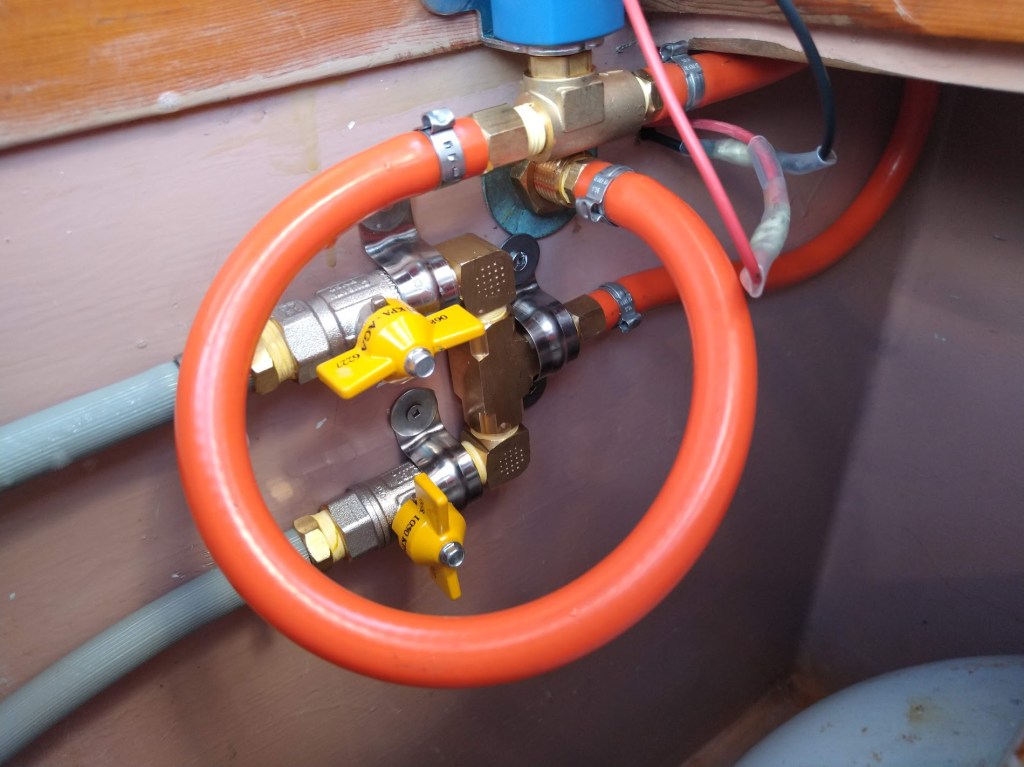I have in the past wondered why gas solenoid shut off valves get hot when they are open. The first time I discovered this (by accident) I was horrified that this hot bit of equipment was sitting in the gas locker. The heat given off convinced me the solenoid was doomed to fail in the near future and I went out and bought a spare.

Some investigation on Google educated me further, its normal for them to get hot and they consume power, around one plus amp when in operation. There are some solenoid switches on the marker that use ‘Pulse and hold’ technology to get around the heat and current problem. They use a pulse of electricity to open the solenoid valve and then reduce the power to hold the valve open. BEP make the BEP 600-GDL that has pulse and hold as do Ocean Safety with their solenoid valve. I hear that both these solutions are excellent pieces if kit – but they are expensive.
Having spent time and money upgrading the solar set up and battery capacity on Truce I have become slightly obsessed with power harvesting and amp conservation. The thought of the gas solenoid guzzling amps just to get hot was unbearable and I looked for a solution. Again, Google came to the rescue.
On an RV chat site I came across a post that seemed to offer a solution to the problem for less than four dollars – could this be true? The answer is to put a small capacitor and resistor into the solenoid switch circuit. The idea being that the capacitor lets through a pulse of electricity to open the solenoid, then as it quickly charges stops further current flowing. The resistor then takes over and passes a reduced current to the solenoid to hold it open. When the power is turned off the resistor discharges the capacitor and the solenoid valve closes.
I purchased a capacitor and resistor form the local electronics shop and set them into a small terminal block. I put the power in on one side and out the other. The capacitor and resistor bridge between the two strips. Just in case it wouldn’t work or will fail in the future I have also rigged up a link wire. This link wire shown in the photo below with the blue terminals, can be linked between the two terminal strips to bypass the resistor and capacitor if required. Or, if the capacitor or resistor should fail, be used to bridge across between the strips as a direct connection.

Once it was rigged I switched on the power – BINGO it worked, the solenoid opened and the amps registered zero point two (0.2AMP) . I switched it on and off a few times and it still worked. Then I left it on and boiled kettle for a cup of tea. The solenoid remained cool.

I am very pleased with my work and now just need to tidy up the wiring. I am saving power and the solenoid remains cool when open. My obsession with power saving is satisfied – for now. Of course I still carry a spare solenoid.
Discover more from The Adventures of Captain Ray Penson
Subscribe to get the latest posts to your email.